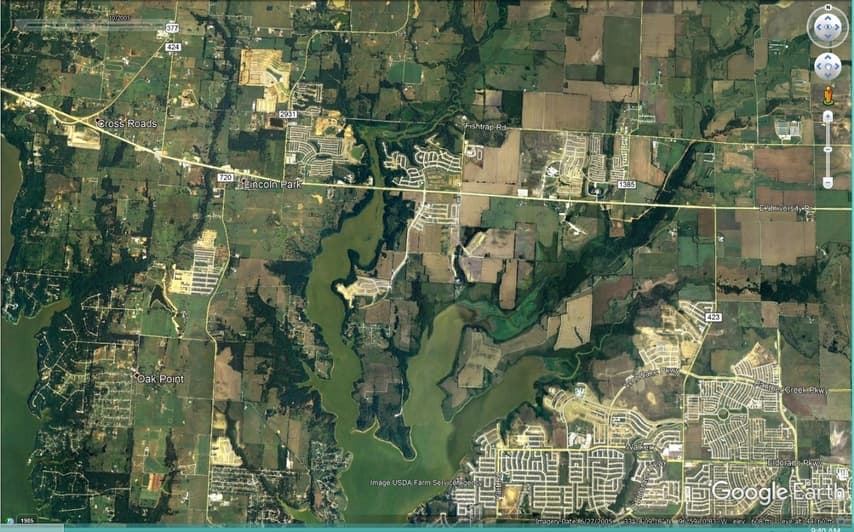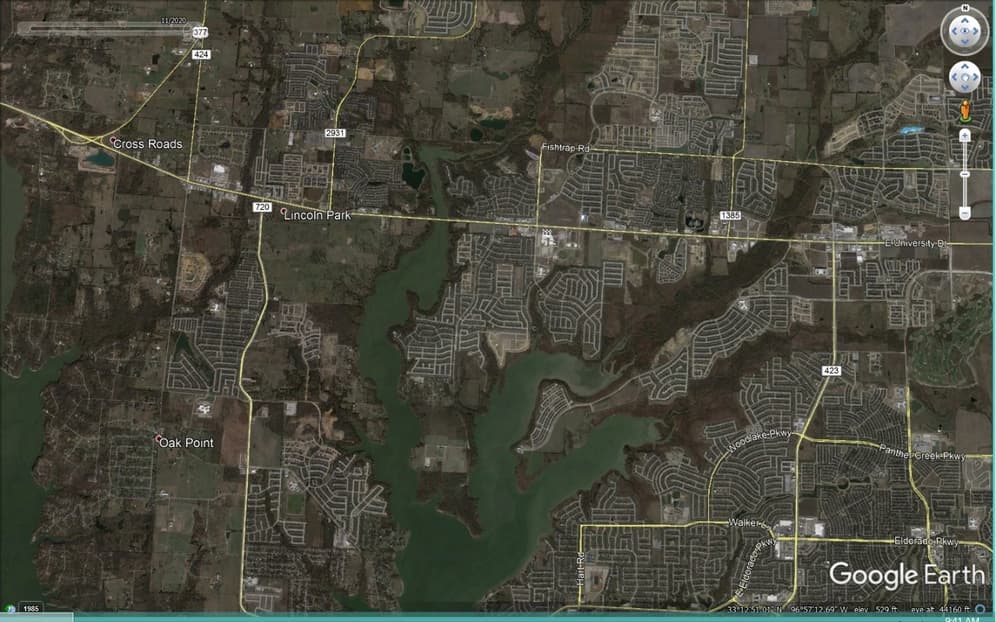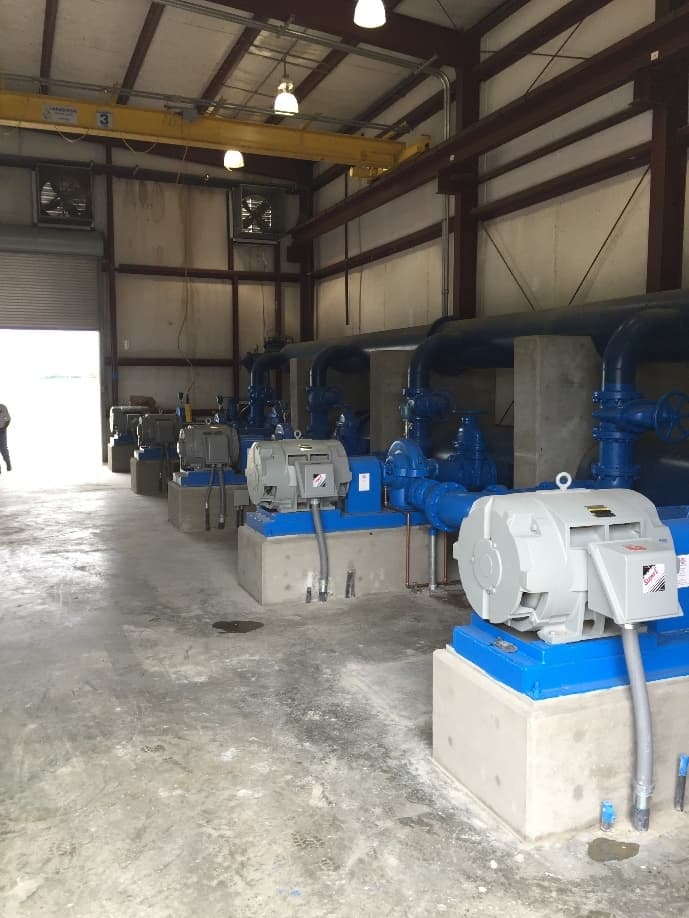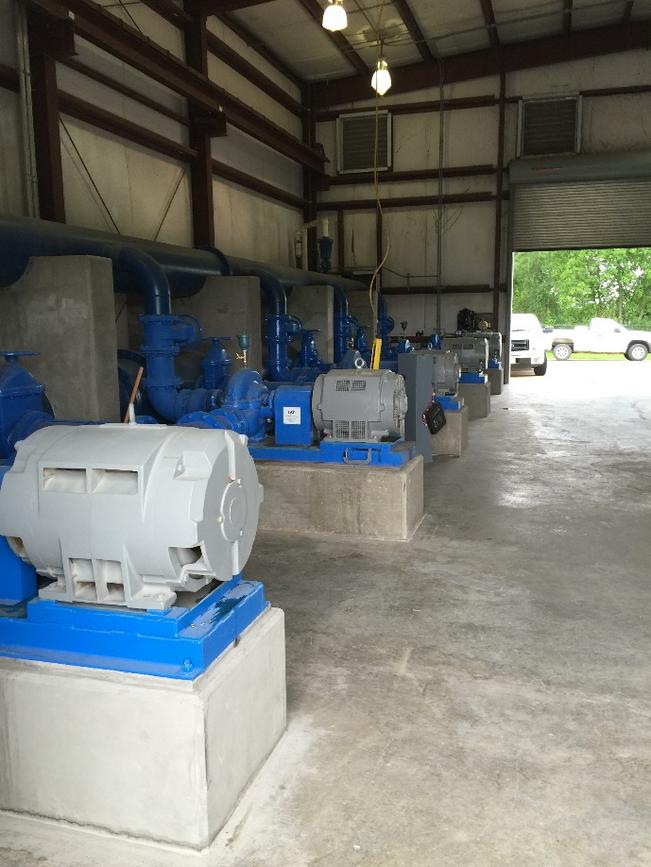Nitrification Solved via Digital Twin
Mustang Special Utilities District (TX) saved $1MM in capital expenditure by deploying digital twin technology and automation. Hot Texas summers and long water residence times create the perfect environment for nitrification. Rather than investing in a costly re-chloramination infrastructure, Mustang used digital technology to prevent nitrification from occurring using only existing infrastructure and digital technology. This eliminated any need for additional instrumentation, chemicals and equipment which are both costly to construct and maintain.
The challenge
Mustang Special Utility District provides water and wastewater services to 120 sq miles area just North of the Dallas- Fort Worth area. The landscape of Mustang’s service area is changing dramatically: what used to be miles of open fields and horse farms is transforming seemingly overnight into large, planned communities. Population growth is 22% year over year.


Figure One Mustang Special Utility District Service Area 2005 vs. 2020
Mustang Special Utility District is planning for the population growth by adding additional elevated storage. A 2.5M gallon elevated storage tank was constructed to service what would become a populated community over the course of several years. However, when the tank was constructed, demand was not high enough for the tank to cycle regularly. This coupled with the hot Texas summer created a perfect scenario for nitrification. Nitrification is a microbial process that converts ammonia and similar nitrogen compounds into nitrite (NO2–) and then nitrate (NO3–) and occurs in systems that use chloramines for disinfection (TCEQ, 2021)1. Mustang considered two options: solve the problem by adding a new re-chloramination process or use digital technology to prevent nitrification. Let us examine the options:
1. Construct new chloramination facility
This is a costly solution both in terms of capital costs ($1MM) and yearly chemical/operation/maintenance costs ($18,000/year). A new facility would require additional samples to be collected bi-weekly along with the already 40 sample sites spread across the utility district. Operators at Mustang are spread thin over a large service area, so adding additional testing and calibration tasks to everyday workload is burdensome. In addition, this option would take between 1–1.5 years to design, bid, and construct — and Mustang needed a solution quickly.
2. Digital twin and automation
Deploy a digital twin of the entire system including the pump station feeding the tank and the elevated storage tank. This optimizes tank turnover through automation to prevent nitrification. Specific Energy’s Dynamic Pump Optimizer uses data analytics and automation to reduce tank residence time, ensuring water maintains disinfectant residual levels well above regulatory (TCEQ) requirements.
Mustang’s solution
Mustang opted for Option 2. The Dynamic Pump Optimizer took four weeks to implement at a total cost of $14,800 USD. The control system intelligently cycles water in and out of the tank, to ensure the minimum disinfectant level is always maintained and the water in the tank is always fresh.
A three-phase level control scheme was deployed (see below). The digital twin used minimum and maximum tank level and a calculated volume of fresh water required from the pump station based upon the size of the system’s piping. Parameters were fine-tuned to ensure flexibility in the face of changing system conditions. The three-phase level control scheme consisted of:
-
Drain Phase - When tank is full, turn off pumps and let the tank drain to a set minimum level determined by current diurnal demand curve. This empties the tank of older, partially nitrified water.
-
Maintain Phase - Run the pumps in level-regulation mode, maintaining the tank to minimum acceptable level near its set minimum level. Customers use the older water in the pipeline and the pumps replace it with fresh water. The station runs in this way until the previously calculated volume of fresh water has been pumped.
-
Fill Phase - Run the pumps at a faster speed to quickly fill the tank to a configurable maximum level. With the piping charged with fresh water, quickly push it into the tank so the older water in the tank mixes with the fresh water, eliminating nitrification.

Figure Two Control Scheme
Results
Reaching out to Specific Energy led to tremendous savings for Mustang SUD. The estimated $1MM cost and at least a year to implement the addition of a chloramination facility near the tank was avoided. A $14,800USD solution from SE involving software, automation, and analytics was implemented, saving Mustang SUD 98.5% of what they were expecting to pay to solve the nitrification problem. The software solution saved up to 17 months of potential time in which the residual chlorine level could have become worse. The savings in capital costs does not account for the added operation, maintenance and chemical costs involved with a chloramination facility, nor the avoidance of the associated EHS risks. The implemented solution involved a level control scheme with the five (5) pumps at the Temple Dane Pump Station, which filled the Byran Road storage tank, programmed, and run using the SE DPO edge analytics tool. In addition to optimizing the tank turnover time, the DPO also automated pump operation to minimize energy usage at the Temple Dane Pump Station. Through automation and analytics, Mustang reliably maintained disinfectant residual in the tank to acceptable levels and avoided the need to install an expensive high maintenance chlorination facility. The control scheme also always ensured required level for fire protection, which is a mandatory requirement. Additionally, all setpoints were achieved while operating the pumps at minimum specific energy, minimizing energy consumption and maintenance expenditure.
“We were looking for cost-effective solutions to our nitrification issues when we talked with Specific Energy about our problem. I am impressed with Specific Energy’s ability to solve our issues.”
-Aldo Zamora, Operations Manager, Mustang SUD

Figure Three Aldo Zamora
Conclusion
Through careful investigation of Mustang Special Utility District’s challenge, Specific Energy’s DPO was achieved great results by preventing nitrification. Mustang avoided significant capital costs and the additional annual maintenance and chemical costs that are required to operate and maintain a chloramination facility. This is an example of how strategically deployed digital twin technology can quickly and easily solve operational challenges without breaking the bank.


Figure Four Temple Dane Pump Station